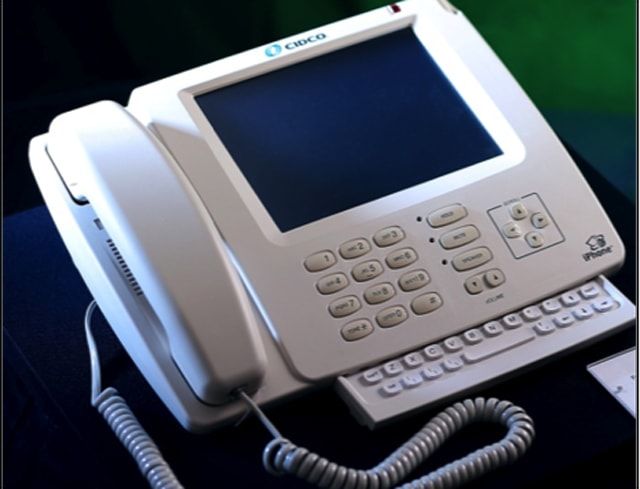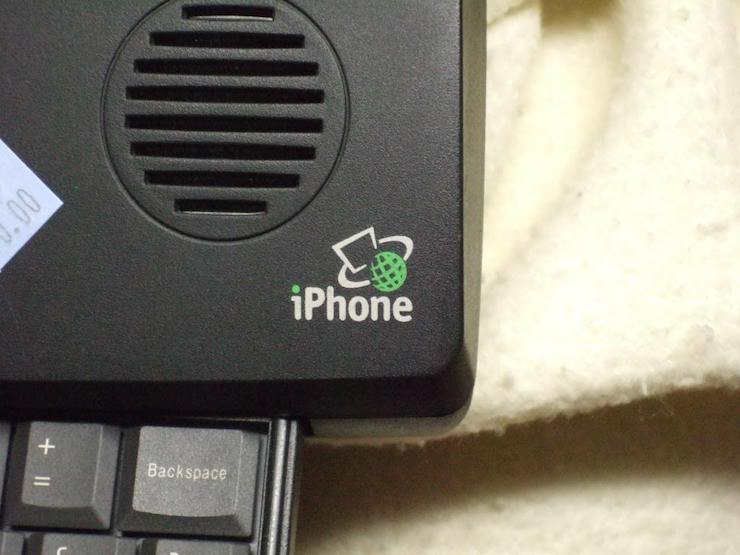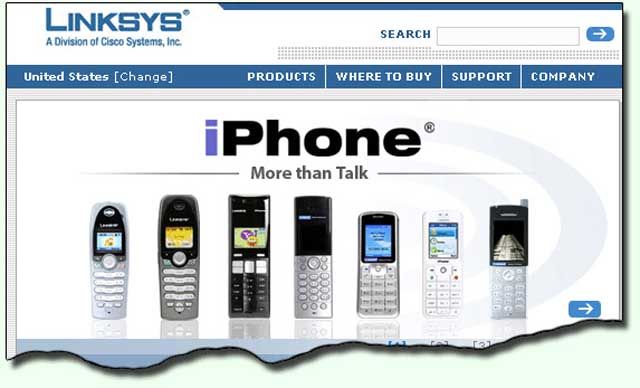Apple has made the “i” prefix a hallmark of its mobile devices. But the name “iPhone” was not invented by Steve Jobs. 10 years before the Cupertians, the iPhone already existed … Take a look at it – it’s worth it.
BY TOPIC: What a mobile phone, laptop, player, game console looked like 50 years ago.
The Internet History Podcast talked about the “very first” iPhone, which was introduced in 1997 by Infogear. Ironically, both philosophically and technologically, it had much in common with the device that Steve Jobs introduced on January 9, 2007 at MacWorld.
Remember the legendary Apple iPhone mantra voiced by Steve from the stage?
“So, [он сочетает в себе] three things: a widescreen iPod with touch controls, a revolutionary mobile phone, and a breakthrough internet communicator. iPod, phone, Internet communicator. iPod, phone… you understand, don’t you? These are not three separate devices. It’s one device, and we call it the iPhone.”

Infogear’s iPhone was also aimed at doing three things at once: answering calls, e-mails, and doing “light” web surfing on the Internet. Like Apple, Infogear wanted to make the device as simple and easy to use as possible. And the design for the “smart” phone from 1998 was done by Frog Design, which once worked on several Apple computers at once.
The creator of the device, Robert Ackerman, recalled that when working on his iPhone, he was guided by the simple principle “Will my mother be able to use this thing?”. He assures that the skills of working with a cell phone and an ATM were enough to master the Infogear iPhone and go online from the device.

Interestingly, the Infogear phone had not only a flip-out keyboard, but also a (albeit black and white) touchscreen display. As you can see in the pictures, the work with the interface also went through icons. Sounds familiar, doesn’t it?
True, as a result, the “sensor” turned into a problem for the manufacturing company. At that time, the technology was still immature and therefore expensive to manufacture. Infogear hoped that the cost of manufacturing their iPhone would not exceed $100, which would allow it to sell for $250-300. But in the end, the cost of the touch screen alone was $80. Finding a major partner who could subsidize the price of the iPhone also failed. According to Ackerman, as soon as he offered someone to sponsor a revolutionary project that combines the best features of telephony and the Internet,
“… they looked at me as if my third eye had opened. “After all, a phone is a phone, and the Internet is the Internet! they said.

Therefore, at CES-1998, the iPhone was presented at a price of $499. Another 20 dollars had to be paid for the possibility of accessing the Internet.
Industry media liked the iPhone, despite the high cost. Personal Computer World called the phone “an exciting glimpse into the future” and PC World described it as a “well-designed product” that “brings together the power of phone, Internet, and e-mail access in a small package.” The CES-1998 jury awarded the iPhone the title of the most innovative device of the year.

At the same time, it should be borne in mind that the capabilities of the Infogear phone were very modest. It only had one phone line, so the owner couldn’t talk and surf the Internet at the same time. The Apple iPhone, of course, no longer had such problems. Specifications were also more than modest: only a 16-bit processor and only 1 megabyte of memory for everything. Ackerman explains that the mobile technologies that existed then simply did not allow to release something more advanced.

But there were more than enough innovations. In 1998, Infogear iPhone already had:
- Touch technology for use at work. The iPhone’s software was able to recognize a number on a web page and turn it into a touch button, so you could make a call with just one tap.
- Due to the modest “stuffing”, most of the computational operations were performed on a remote server. Today, this would be called – albeit with some stretch – “cloud computing”.
- Voice mail. Dictated messages were translated into text and displayed on the screen, it was possible to immediately call the sender back by pressing one button.
- Built-in map application (provided by RR Donnelley & Sons).
- Movie ratings from Hollywood Online.
- Similar to the recently announced Apple Newsstand app, the Infogear iPhone provided news and articles from popular magazines such as People, Time, Money and Sports Illustrated.
BY TOPIC: Simon is the world’s first smartphone that appeared 15 years before the iPhone (video).
Impressive? Not that word. Even the marketing “tricks” were similar. An Infogear press release on the occasion of the iPhone’s release said that the device was not released to replace the PC, but was intended to “coexist with the PC, like a microwave oven coexists with a conventional stove.” Steve Jobs once said something similar too—many are familiar with his similar style comparison of cars and trucks with tablets and PCs, respectively.

In 1999, the second generation of the Infogear iPhone was released, the novelty received a different keyboard and the long-awaited second telephone line.
A total of 100,000 iPhones were sold.
Ackerman laments – the creator of the iPhone is sure that his product was ahead of its time and he was simply unlucky with the maturity of the market and the technologies available at that time.
However, our story is not over yet. In 2000, one of his project’s investors, well-known network equipment trendsetter Cisco, bought Infogear and all of its intellectual property for $300 million.

Among other things, Cisco became the owner of the iPhone brand and trademark. She used her right – in December 2006, a VOIP phone under the Linksys brand saw the light of day, on its case right under the screen the inscription “iPhone” was applied.

So when Apple released its iPhone in 2007, it formally violated Cisco’s rights and should have been punished. A lawsuit has already been filed, but Steve Jobs once again proved himself to be a genius negotiator (the story of how he negotiated with Cisco, including not very beautiful methods, deserves a separate article) – and on February 20, 2007 network equipment dealers decided that they would not interfere with the triumphant march of the iPhone around the planet.
See also:
.
The post It turns out that the first phone called iPhone was released … in 1998! appeared first on Gamingsym.
